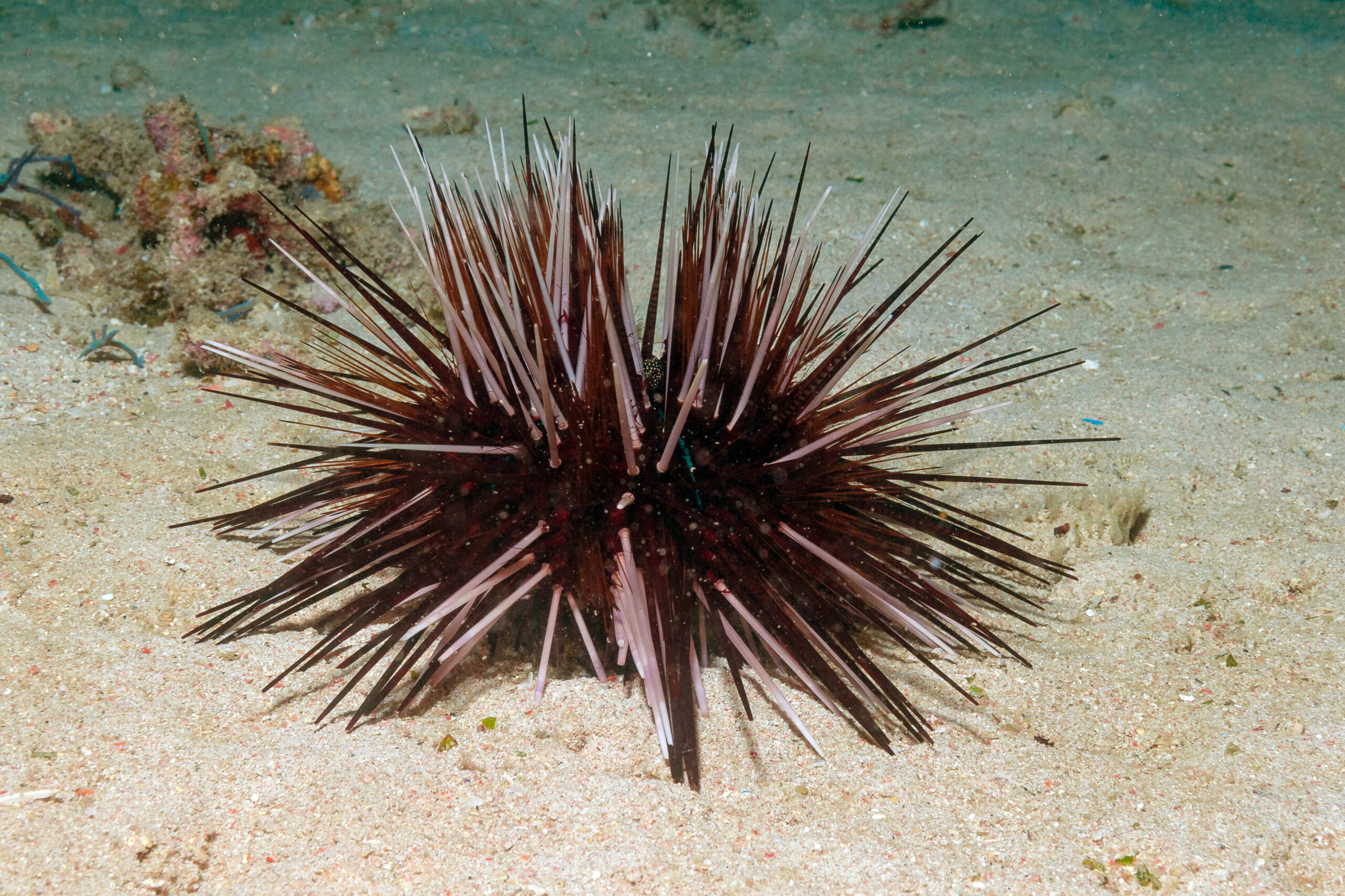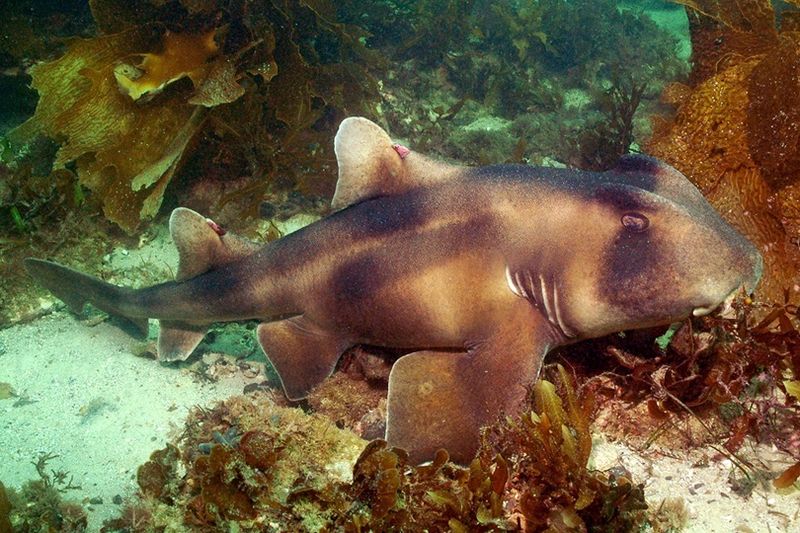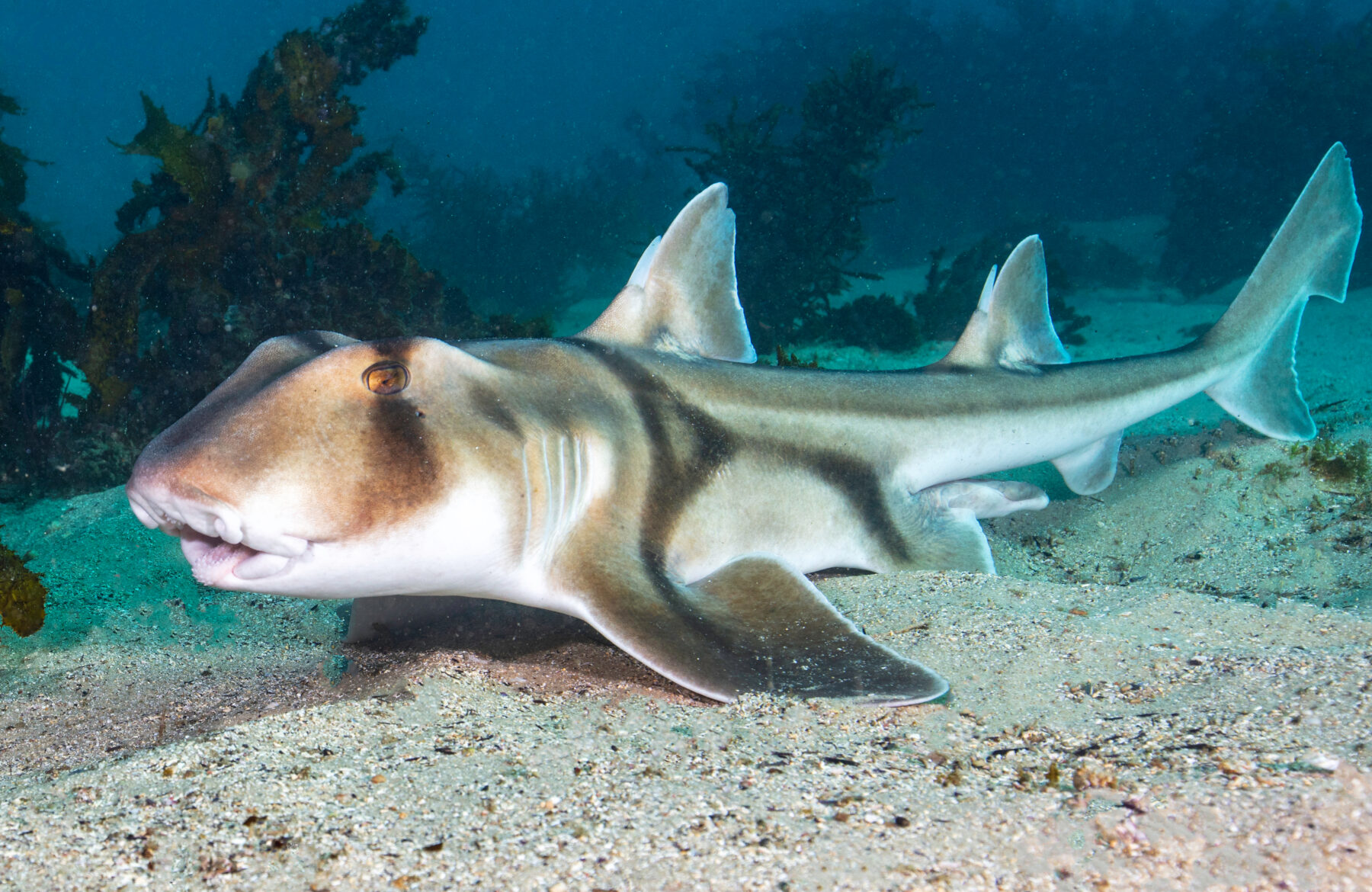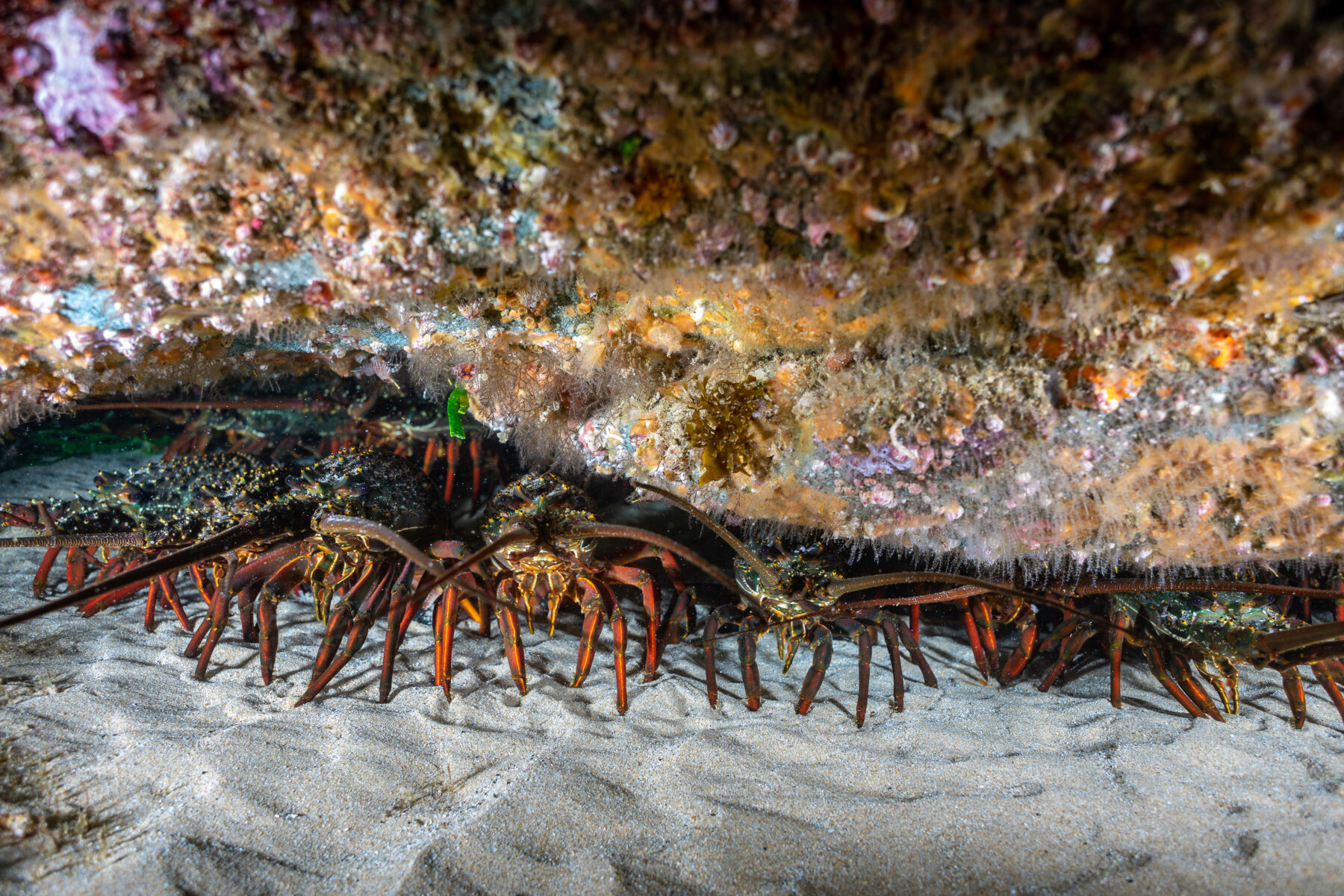Sharks filmed ‘smashing’ sea urchins

Lobsters have long been known as a key predator of sea urchins. Several species of sea urchins, although native to Australian waters, are now considered to be a pest due to exploding populations.
These masses of sea urchins eat kelp and seagrass, the loss of which is devastating to underwater ecosystems.
The problem is increasing, with the long-spined sea urchin (Centrostephanus rodgersii) – having wreaked havoc in New South Wales for decades – now being spotted in Victoria and Tasmania, pushed further south to avoid warming waters.

These worrying sightings were the catalyst for marine scientist Jeremy Day’s most recent research project.
“Centrostephanus rodgersii doesn’t like the heat so it’s going to colder regions, and in these new places it’s causing lots of problems,” says Jeremy, a The University of Newcastle PhD student.
Jeremy’s experiment was originally designed to show how lobsters prey on urchins, to inform management strategies of the pest.
The team tethered (surgically restrained) 100 sea urchins – both long-spined sea urchins and short-spined sea urchins (Heliocidaris erythrogramma) – at the entrance of an Eastern rock lobster (Sagmariasus verreauxi) den in the waters off Wollongong, 80kms south of Sydney, for 25 nights.
Cameras using red-filtered light were then pointed at the lobster den where the sea urchins were strategically placed.
“But that’s not what we found,” Jeremy says. “Crested hornsharks and Port Jackson sharks came in and smashed 45 per cent of the urchins, whereas lobsters took only 4 per cent.”
Mounting evidence
This isn’t the first time Port Jackson sharks (Heterodontus portusjacksoni) and crested hornsharks (Heterodontus galeatus) have been known to eat sea urchins.
The first evidence of this behavior can be traced back to the 1970s.
“We’ve known since research published in the early ’70s by McLaughlin and O’Gower, who dissected Port Jackson sharks. They reported that Port Jackson sharks had Centristophanous spines in their guts,” Jeremy says.


For some time now divers have also reported seeing Port Jackson sharks and crested hornsharks with purple stains around their mouths.
“In my dissections of predators, I tend to find urchin dye from Centrostephanus rodgersii in the stomachs. It has a really strong purple colour,” Jeremy explains. “So given that we now find them eating tethered urchins, and we know they’ve got this purple ‘lipstick’, and we know it’s in their guts, it’s pretty likely that they’ve been eating urchins this whole time, to some extent.
“But until this experiment, we didn’t know just how keen they were.”

Why does this matter?
The results of this study – published this month in the journal Frontiers in Marine Science – challenge the existing belief that lobsters are the sea urchin’s key predator.
“Lobsters are thought to be key urchin predators, which control urchin abundances, while sharks are not typically considered in urchin predator models,” Jeremy says.
“But the role of lobsters appears to be less than expected, while sharks are overlooked predators of sea urchins.
“Importantly, It has been thought until now that there were few or no predators capable of handling very large urchins, but these Port Jackson sharks and crested hornsharks easily handle very large sea urchins.”

Climate change the ultimate predator
“This study confirms that the range of predators that eats urchins is broader than has been traditionally thought,” Jeremy says. “But I am still looking for that key predator which might be able to control urchins.”
However, sea urchins aren’t the only thing responsible for the decline in kelp and sea grass.
“The elephant in the room is really climate change – that’s what is likely stripping our kelp forests and causing massive declines,” Jeremy says.

